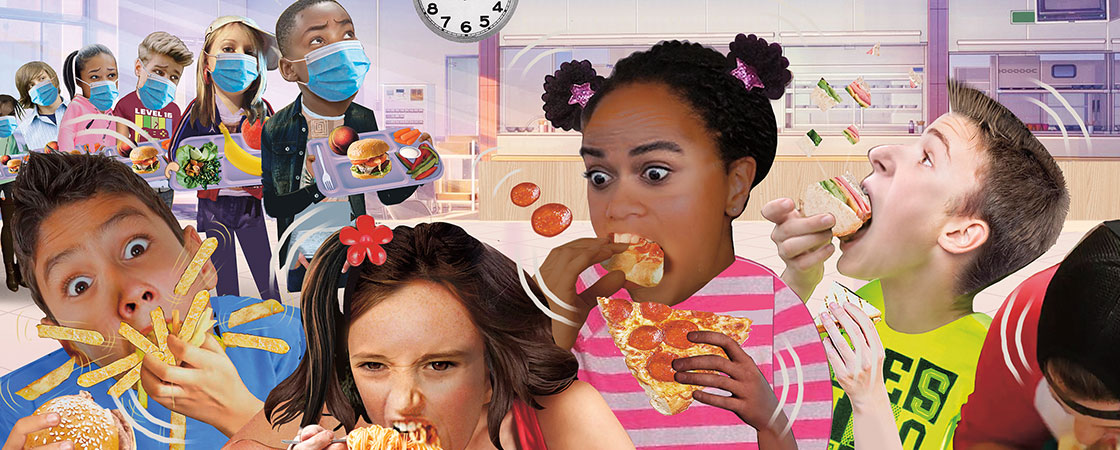Shutterstock.com
It’s 12:00 p.m.—lunchtime at last. You make a beeline for the cafeteria. It’s pizza day, so you know you’ve got to get there quick. You walk through the doors and join the long line.
The minutes tick by. Your stomach grumbles as you glance at the clock. It’s 12:12. The lunch period is nearly half over!
Finally, you get your food, scramble to a seat, and start to chow down when—RRRRING!
You shove a big bite of pizza in your mouth before scurrying back to class.
If this sounds familiar, you’re not alone. Lunch periods in the United States vary, but in many schools, students have around 25 minutes. When you consider how long it takes to get to the cafeteria, wait in line, and take a bathroom break, there isn’t much time left to eat. Sometimes kids only have five minutes.
Experts say this time crunch is doing students a disservice. Having more time to eat, they say, would lead to less food waste, improved learning, and healthier habits. Both the American Academy of Pediatrics and the School Nutrition Association recommend students get at least 20 minutes to eat after they’ve been seated.
That’s why today, some schools have started making lunch periods longer.
Should more schools do the same?

